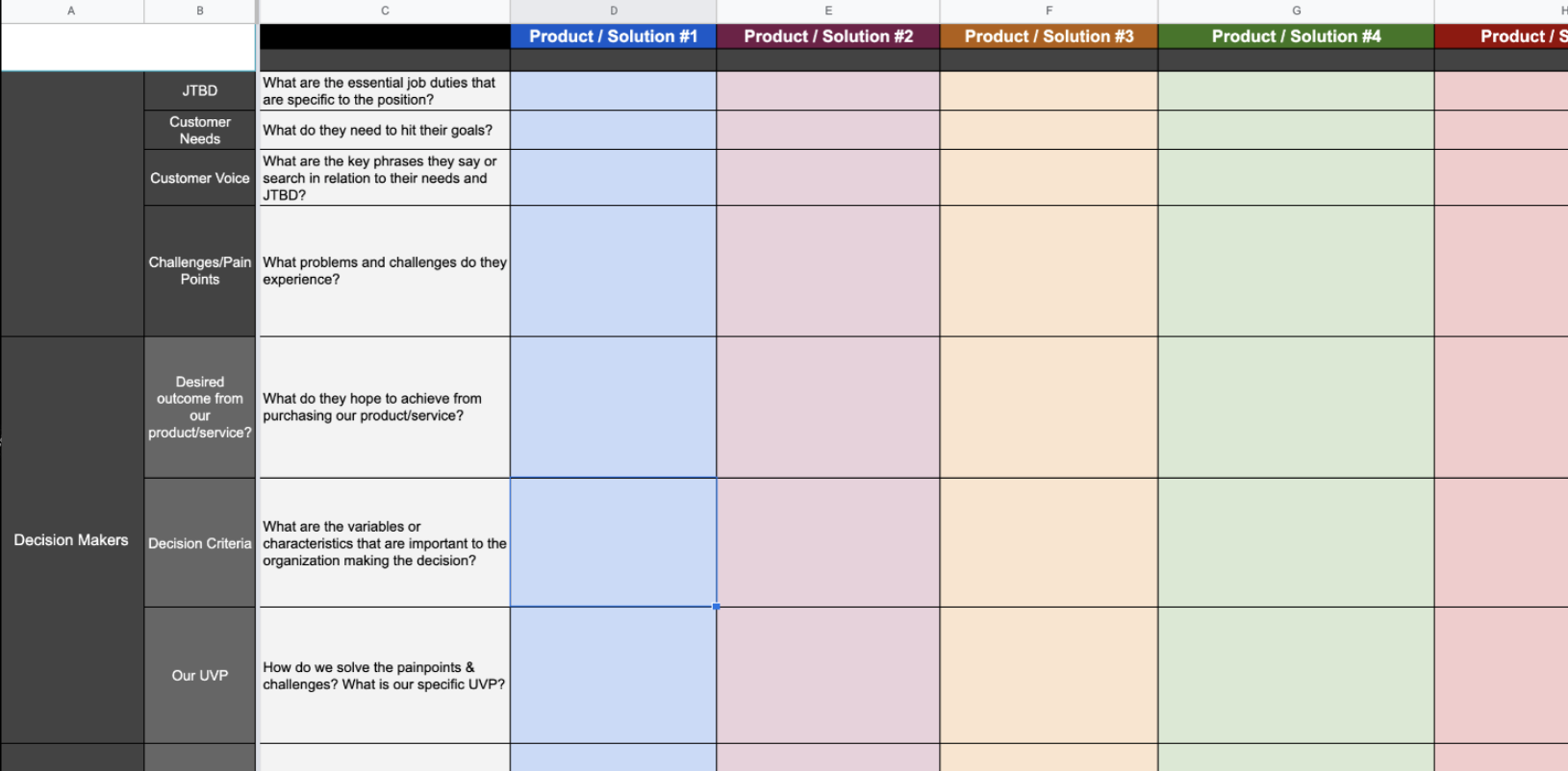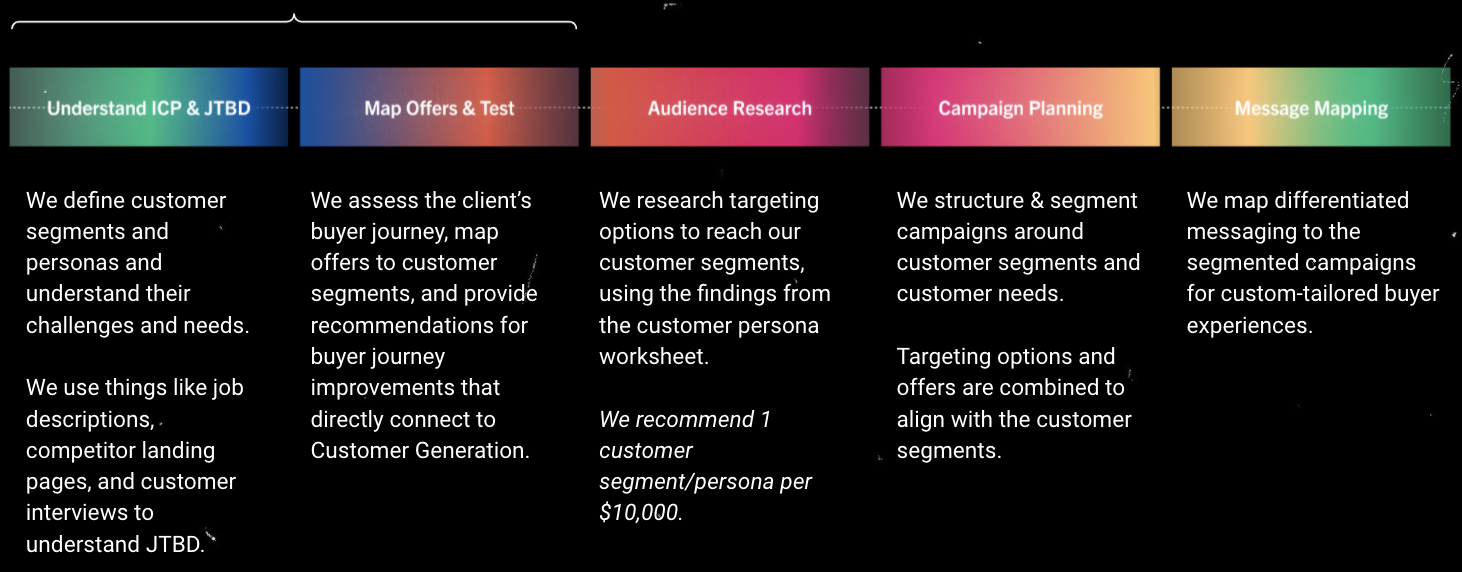Need a new approach to demand generation? Are you looking for a different way of going to market?
On August 24, I moderated a sponsored Search Engine Journal webinar presented by Garrett Mehrguth, President and CEO at Directive.
Mehrguth shared insight on how marketers can use customer generation to deliver better results.
Here’s a recap of the webinar presentation.

Customer Generation: What It Is & How It Differs From Demand Gen
Customer generation is a marketing methodology that focuses on sales qualified leads (SQLs) and customers instead of legacy metrics like marketing qualified leads (MQLs).
By simply creating MQLs as the starting point instead of the endpoint, you completely change the way you go about your start.
Mehrguth says it has improved Directive’s own product quality, transformed their company, and allowed them to grow exponentially.
Demand Generation vs. Customer Generation
There are areas where typical demand generation campaigns do not deliver. Focusing on customer generation can change all of that.
Here are five ways demand generation and customer generation differ.
|
Demand Generation |
Customer Generation |
|
Third-party data for targeting. |
First-party data for targeting. |
|
Product-led approach for go-to-market. |
Customer-led approach for go-to-market. |
|
ROI is the goal. No tracking required. |
LTV:CAC ratio is the goal. Tracking required. |
|
Indicator of marketing success: MQL. |
Indicator of marketing success: SQL. |
|
“Don’t stand out, we are B2B.” |
“Create emotional experiences, we are B2C.” |
Customer Generation: The Process

At a high level, the customer generation process works this way.
- First, map out your total addressable market (TAM), identify your best customers, and then enrich those accounts with first-party data along with search data.
- Break the accounts into customer segments (or tiers) and identify the service lines they’re interested in.
- Determine your financial model. How much can you pay to get each customer segment for each product?
- Hone in on your value proposition. What would get someone from apathy to action? What jobs do they need to get done that you could position yourselves to be discoverable for?
- How do we use emotion personalization and iteration to keep improving?
Ultimately, customer generation aligns your entire brand to a new philosophy:
“Who” you market to and “why” you exist for them matters more than “how” (a.k.a., your tactics).
This results in more personalized customer journeys across all touchpoints from acquisition to retention.
The Five Principles of Customer Generation
Customer generation can be treated as a methodology. Let’s unpack the specifics of each principle and how you can directly apply that to your marketing.
Principle 1: First-Party Data Unlocks Growth
You need to map your total addressable market (TAM), build account lists, and aggressively scale spend without using an account-based marketing (ABM) provider.
The goal is to go native to your own channels in order to get a lot more control. You’ll also have to be a lot more creative than just sending people display ads.
First-party data, which is data that your company owns, not only future-proofs your campaigns. It also gives you the confidence to grow brand advertising because every impression delivered will be a future customer.
Choose Your Data Provider First
While ZoomInfo is still leading in the B2B contact data space, there are other players that are great at certain things, such as:
- Clearbit (technologies that the companies use).
- Seamless.ai (accuracy).
- Crunchbase (funding data).
You should choose one (or more) of these providers depending on what triggers you think are most indicative of the data that makes an account a great fit for your product or service.
Use Employee Size, Technology, Funding, Etc.
Build lists based on headcount, technology, and funding rather than revenue data.
Do not use revenue data for privately held companies as it’s mostly inaccurate.
Headcount is a far better understanding of the size of an organization. You can also scrape it from LinkedIn with a high level of accuracy compared to privately held companies’ revenue numbers.
The technology companies use, on the other hand, will help you identify the maturity of an organization and whether they are a fit for your business.
Meanwhile, funding data informs you whether these prospects can afford your product or service.
Unsure which indicator to focus on? Take your current client list and upload that data to one of these data providers.
You can then enrich your client list with your point of contact to see what title they have and what their experience level is.
This exercise will help you understand your niche and customer personas. Who exactly is the perfect fit for your product or service?
Mehrguth’s team at Directive also built their own database called Pulse to give them unique data insights. This helps them assign a score that’s more indicative if a person is an excellent fit for their business or not.
The better you get with data, the more accurate you get with your advertising which is critical to customer generation.
Manually Verify
It’s essential to manually verify your TAM because you can’t trust third-party data providers 100%.
Check every single solitary account to see if they fit your ideal customer profile (ICP). Cleaning this data is the only way to make sure you aren’t wasting a dime.
This step will completely change your creativity and give you confidence in your go-to-market strategy because you know that every single account you’re going to advertise to could one day be a customer.
Integrate to Salesforce
Use Salesforce as your source of truth for advertising.
Do you know how successful your top of funnel advertising is? How valuable are the impressions you’re delivering?
Many marketers are bad at reporting on how effective their advertising is toward their company’s vision of taking market share.
When you integrate your first-party data and your TAM into Salesforce, you can change that.
Distribute With a Customer Data Platform (CDP) Like Segment
After getting everything integrated into Salesforce, set it up on Segment and you can start distributing all your data in real-time to all your channels.

Articulating the success of your campaigns according to market share penetration will allow you to become exponentially more aligned with your executive team.
Leveling up your reporting this way will ultimately get you more buy-in, budget, and support for your efforts.
Principle 2: Customer Led Over Product Led
Your product is not for the masses. A customer-led approach gives you the power to impact business KPIs such as:
- Average contract value.
- Trial conversion rate.
- Lifetime value.
- Customer acquisition cost.
- And more.
By focusing on your most valuable customers, you truly are in control.
Most B2B SaaS companies start with what they’re selling, instead of focusing on who they’re selling to. We need to fix that.
Instead of structuring around the products you offer, consider structuring around your customer segments and customer needs.

This change in how you write your copy, position your value propositions, and articulate your value to your ICP is the difference between a poor conversion rate and a great conversion rate.
In turn, it impacts your ability to monetize your ads or organic traffic.
Here’s a sample worksheet you can use to enter your ICP’s “Jobs to be Done” (JTBD), needs, voice, challenges/pain points, etc. You can then map them to your products or solutions.

The most successful B2B SaaS companies are customer-led.
Case in point? Workable, a recruiting software and hiring platform.
Their core site is organized around customer segments and need states.

They have thousands of HR resources for their customers.
The result?
Workable drives 35 million visits per year and dominates their keywords.
Customer-led is the backbone of Directive’s strategy as an agency.
It is applied in the early stages of the project phase and influences all strategy and execution.

Principle 3: Financial Modeling Is a Need to Have
Scale without financial modeling is a pipe dream.
Marketers, in general, are not great at financial modeling. As such, we struggle to connect our efforts to revenue and get the respect, authority and budget we deserve as marketers.
Using the LTV:CAC financial model can help change that and improve your ability to be a valuable partner to the executive team and to the business’s vision.
Gather Your Numbers
You need to know your business’s financials, including Lifetime Customer Value (LTV) and Customer Acquisition Cost (CAC) metrics, in order to compare the value of a customer compared to the cost of acquiring them.
Customer generation is not all about any customer. It’s about finding your most profitable customer.
Make sure to put those numbers into a sheet and review your actual historical performance.
Track Your Channels
Gathering and tracking your numbers allow you to create benchmarks and inform channel strategy and tactics.
Tracking lets you know better where you should be spending more money, where you should be spending less, and what you need to do to hit your goals.
Leverage First-Touch Attribution
Many mid-market and publicly traded companies don’t have the maturity to pull off multi-touch attribution. They are still struggling across the board with marketing ops and attribution.
So for this type of model what we’re trying to look at is where should we spend another dollar to get another customer?
Oftentimes, it’s hard to fund indirect or complementary channels. We want to fund channels that have that first-touch attribution.
Use this LTV:CAC Tool
Directive’s free LTV-CAC tool can help you with your campaign planning.
Use it to level up your financial modeling, articulate value, increase your budget, and be more valuable to the organization.
Principle 4: SQLs Beat MQLs Every Time
Let’s address the elephant in the room. Google has intent but poor firmographics.
It’s really hard to monetize Google Ads when you’re in a niche or when you have a high average order value because the majority of the customers who search that query don’t fit.
And when you specify your query there are not enough people searching for you to take make it a substantial revenue channel.
Conversely, paid social allows you to target audiences with firmographics but they have no intent.
After years of dealing with this dilemma, Garrett and his team discovered a solution – monetizing paid social with a great offer.
They found an incentive so good that they were able to create intent from social. Gift cards are what worked for them.
By focusing on giving money to your prospects and not to the platform, you charge the economics of advertising.
Monetizing comes down to improving your sales organization and also improving your value proposition.
A few more tips:
- Buy Sendoso for gift sending.
- Choose a tool like Calendly or Chili Piper so you are driving appointments not form fills.
- Train sales development reps and account executives on how to have gift card/incentivized intro calls. Use the BANT script:
- Budget: What is their spending ability? Do they meet our minimums?
- Authority: Are they the decision-maker? If not, who is the true decision-maker?
- Needs:
- What immediate need or urgent problems are there?
- What are their pain points within each of our product lines?
- Organic
- Paid Media
- Creative
- Marketing Ops
- Strategy
- What gaps did we find in our initial research prior to the call?
- Timeline: In what timeframe will they need a solution?
Principle 5: There’s No Such Thing as B2B
Where direct-to-consumer marketing (D2C) marketing is all about building a brand and creating an emotional connection, business-to-business (B2B) marketers seem to be simply optimizing for safeness.
Your customers are people, not corporations. They hate boring marketing as much as you do.
It’s time to change the expectation of what B2B marketing is.
Marketing is emotional. Ask yourself: How can I motivate my potential customers from apathy to action?
We sell to individuals in corporations and we need to create an emotional connection with them.
And video creates a strong bridge from a gift to your value proposition. (Here’s an example from Directive.)
People make emotional decisions, not scientific ones, and operate accordingly.

When we put all these together, you have a differentiated go-to-market strategy that will drive impressive returns.
Key Takeaways
- The biggest problem in demand generation today is that it could be 50% inaccurate before you launch your campaign. Customer generation fixes that.
- Change the economics of advertising by focusing on giving your money to your prospects instead of your platform.
- The single most important thing with your go-to-market strategy is that you have to manually verify every single account you advertise to, who can one day be a customer.
- Monetizing comes down to improving your sales organization and value proposition. Why do you exist and who do you exist for.
Want to learn more about Customer Generation from one of Directive’s experts? Head over to their website to book an intro call.
[Slides] Customer Generation: Delivering on the Promise Demand Gen Forgot About
Check out the SlideShare below.
Customer Generation: Delivering on the Promise Demand Gen Forgot About from Search Engine Journal
Join Us For Our Next Webinar!
Beyond ROAS: Aligning Google Ads With Your True Business Objectives
Join Justin Covington, Director of Paid Channels Solutions at iQuanti, as he breaks down the Google Ads changes and show you how to use value-based bidding to drive measurable results.
Image Credits
Featured Image: Alex Oakenman/Shutterstock
All screenshots taken by author, August 2021


